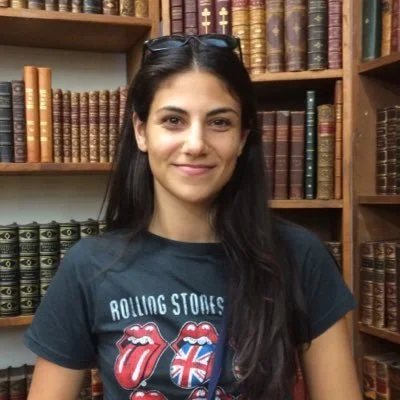Tell Me What You’re Reading No. 47: Artist Kelly M O’Brien - An Ecotopia Conversation
Kelly M O’Brien, a visual artist and an Artist-in-Residence at Woodstock’s Byrdcliffe Arts Colony, discusses Ernest Callenbach’s prescient 1975 novel, Ecotopia, and her installation at Byrdcliffe, which is called "Ecotopia Conversation”.
Carol and I walked up the road recently to visit the Open Studios of the Artists-in-Residence Program at Woodstock’s Byrdcliffe Arts Colony. The Byrdcliffe Arts Colony was founded in 1903 by Ralph Whitehead, the son of a wealthy mill owner from Yorkshire, England. Whitehead was influenced by utopian ideas when he studied at Oxford, and he developed an enduring vision to found his own “brotherhood of artists” community.
The Artists-in-Residence program is one of the many Byrdcliffe programs today that carry on Whitehead’s legacy.
Carol and I saw some really interesting works at the Open Studios and were really struck by an outdoor installation by my guest, artist Kelly M O’Brien.
On the podcast, Kelly and I discuss her installation, which is called "Ecotopia Conversation”, and its relationship to the 1975 novel “Ecotopia: The Notebooks and Reports of William Weston”, by Ernest Callenbach. “Ecotopia” describes a utopian world created by the secession in 1980 of Oregon, Washington and Northern California from the United States. It was a cult novel at the outset, and over the years became required reading as environmental studies took off.
We truly had an Ecotopia Conversation.
Kelly M O'Brien
What Kelly is Reading
Ectopia, by Ernest Callenbach
Reviews The New York Times | The Atlantic
Obit The Washington Post
Matters of Care - Speculative Ethics In More Than Human Worlds, by Maria Pulg de la Bellacasa
Reviews Ethics of Care | Reviews University of Minnesota Press
How to Be Animal - What it Means to be Human, by Melanie Challenger
The Mushroom at the End of the World, by Anna Lowenhaupt Tsing
Changes in the Land - Indians, Colonists and the Ecology of New England, by William Cronin
What Howard is Reading
The Heaven and Earth Grocery Store, by James McBride - Eccentric, larger-than-life, vividly drawn characters, and entertaining in the spirit of his Deacon King Kong; beautiful and emotionally moving and meaningful in the spirit of his memoir, The Color of Water; also at times repugnant and terrifying; although at the end, hopeful. Really great.
Reviews The New York Times | NPR | The Washington Post | The Daily News | The New Yorker | The Pittsburgh Post-Gazette | The Atlantic
#pouredover | The Free Library of Philadelphia
The Road, by Cormac McCarthy - talk about terrifying; it’s the classic post apocalyptic novel; beautifully written. Read it to commemorate McCarthy’s recent passing and in anticipation of a podcast discussion with a Woodstock friend, David Gordon.
Reviews The New York Times | The Economist | The Guardian | The New Yorker
Pulitzer Prize | European Journal of American Studies | The Art of Writing
Cormac McCarthy The New Yorker
Audio - Cormac McCarthy Peers Into the Abyss https://www.newyorker.com/magazine/2022/12/19/cormac-mccarthy-peers-into-the-abyss-the-passenger-stella-maris
Cutting for Stone, by Abraham Verghese - Gorgeously written; tear drenched pages; read it in advance of tackling the author’s new novel,The Covenant of Water for the November Golden Notebook book club.
Reviews The New York Times | The New York Journal of Books | The Guardian | NPR | The New Yorker | Tadias Magazine | Ethiopian Review
Reading by Abraham Vergese Duke
Small Mercies, by Dennis Lehane - Provocative, repulsive, infuriating, vivid characters, A well told and important story about the reaction to a 1974 federal court order requiring the busing of children to integrate the Boston public schools, and of the racism, poverty, addiction, crime, fear, hatred, ignorance and exploitation of the South Boston community. A timely story, unfortunately, and a heartbreakingly difficult but great read.
Reviews The New York Times | The New York Times | The Chicago Review of Books | NPR | WBUR | The Washington Post | The New Yorker | The Los Angeles Times
Kafka on the Shore, by Haruki Murakami - a story that is fast moving, sometimes dreamy, and quite surreal; the characters are vivid and appealing. My friend Jim Finnegan has said for many years that Murakami should be awarded the Nobel prize for literature. Maybe.
Reviews The New York Times | The New Yorker | The Guardian
Steppenwolf INTO THE LABYRINTH: THE DREAM LOGIC OF KAFKA ON THE SHORE
Fire in the Straw: Notes on Inventing A Life, by Nick Lyons - a beautiful as well as anguished memoir by writer, publisher, legendary fly fisherman (and my podcast guest of a few years ago) Nick Lyons. Very moving.
Review Publishers Weekly
The Candy House, by Jennifer Egan - I was deeply absorbed from the outset. I felt as if I had a puzzle or a mystery to solve. I loved seeing Goon Squadsters as they reappeared in Candy House. Egan is brilliant.
Reviews The New York Times | The New York Times | NPR | The Guardian | The Atlantic | Los Angeles Review of Books | The Irish Times | San Francisco Chronicle | The New Republic | The Washington Post | The Wall Street Journal | Slate | The New York Review of Books | The Times (UK) | The Economist | The Telegraph | More: Book Marks Reviews
More Books and Other Resources
Ecotopia Emerging, by Ernest Callenbach - (Prequel)
Interview with Ernest Callenbach, Berkeley, Ca, March 2009
Christian Botanski Animitas is comprised of more than two hundred small Japanese bells, each of which is attached to a long stem planted on the island within Jupiter Artland’s Duck Pond. The bells chime in the wind, letting out what Boltanski described as the ‘music of the souls’.
The Greening of America, by Charles A. Reich (1970)
Retrospectives Huff Post | CBS News | Washington Examiner
Obits The New York Times | Rolling Stone | The Washington Post
Huff Post 'The Greening Of America,' A #1 Bestseller, Has Long Been Out Of Print. Now It's Back, Just As Relevant As It Was In 1970.





